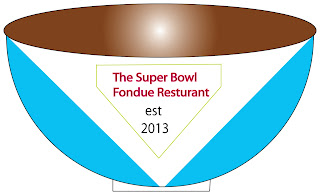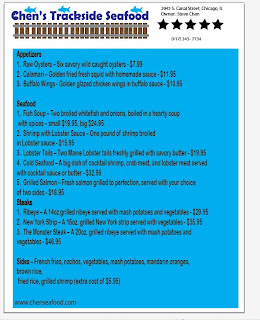Thursday, January 31, 2013
Writing a Book Review
This piece of
writing comes from Indiana University Bloomington, see the web link below.
*****There is, of course,
no set formula, but a general rule of thumb is that the first one-half to
two-thirds of the review should summarize the author’s main ideas and at least
one-third should evaluate the book. Check with your instructor.*****
Writing
Book Reviews
A book review tells
not only what a book is about, but also how successful it is at what it is
trying to do. Professors often assign book reviews as practice in careful
analytical reading.
As a reviewer, you
bring together the two strands of accurate, analytical reading and strong,
personal response when you indicate what the book is about and what it might
mean to a reader (by explaining what it meant to you). In other words,
reviewers answer not only the WHAT but the SO WHAT question about a book. Thus,
in writing a review, you combine the skills of describing what is on the
page, analyzing how the book tried to achieve its purpose, and expressing
your own reactions.
READING THE BOOK
As you’re reading or
preparing to write the review, ask yourself these questions:
What are the
author’s viewpoint and purpose?
The viewpoint or
purpose may be implied rather than stated, but often a good place to look for
what the author says about his or her purpose and viewpoint is the introduction
or preface.
What are the
author’s main points?
Again, these will
often be stated in the introduction.
What kind of
evidence does the author use to prove his or her points? Is the evidence
convincing?
Why or why not? Does
the author support his or her points adequately?
How does this book
relate to other books on the same topic?
Is the book unique?
Does it add new information? What group of readers, if any, would find this
book most useful?
Does the author
have the necessary expertise to write the book?
What are the most
appropriate criteria by which to judge the book? How successful do you think
the author was in carrying out the overall purposes of the book?
Depending on your
book’s purpose, you should select appropriate criteria by which to judge its
success. Use any criteria your instructor has given you in lecture or on your
assignment sheet. Otherwise, here are some criteria to consider. For example,
if an author says his or her purpose is to argue for a particular solution to a
public problem, such as school reform or international relations, then the
review should judge whether the author has defined the problem, identified
causes, planned points of attack, provided necessary background information and
offered specific solutions. A review should also indicate the author’s
professional expertise.
In other books,
however, authors may argue for their theory about a particular phenomenon.
Reviews of these books should evaluate what kind of theory the book is arguing
for, how much and what kind of evidence the author uses to support his/her
scholarly claims, how valid the evidence seems, how expert the author is, and
how much the book contributes to the knowledge of the field.
WRITING THE BOOK
REVIEW
Although you should
include what you feel is appropriate for explaining your assessment of a book,
reviews generally include the following kinds of information.
Most reviews start
off with a heading that includes all the bibliographic information about
the book. If your assignment sheet does not indicate which form you should use,
you can use the following:
Title. Author. Place of publication: publisher, date of
publication. Number of pages.
Like most pieces of
writing, the review itself usually begins with an introduction that lets
your readers know what the review will say. The first paragraph usually
includes the author and title again, so your readers don’t have to look up to
find the title. You should also include a very brief overview of the contents
of the book, the purpose or audience for the book, and your reaction and
evaluation.
Reviews then
generally move into a section of background information that helps place
the book in context and discusses criteria for judging the book.
Next, the review
gives a summary of the main points of the book, quoting and paraphrasing
key phrases from the author.
Finally, reviewers get
to the heart of their writing—their evaluation of the book. In this
section, reviewers discuss a variety of issues:
• how well the book has achieved its goal,
• what possibilities are suggested by the book,
• what the book has left out,
• how the book compares to others on the subject,
• what specific points are not convincing, and
• what personal experiences you’ve had related to the
subject.
It is important to
carefully distinguish your views from the author’s, so that you don’t confuse
your reader.
Like other essays,
book reviews usually end with a conclusion which ties together issues
raised in the review and provides a concise comment on the book.
Example:
Hamlet
William Shakespeare
Summary: Hamlet is a revenge story
that is perhaps like any other- a son's quest for avenging his father's murder.
But it has been said that nothing is new under the sun. All stories are old and
familiar, and it is the telling that raises it to the level of a masterpiece.
Love, lust and hatred, those indispensable elements of every story, are
discovered anew in this timeless classic. The drama pulls the reader into an
intimate engagement and Hamlet's tragedy becomes the tragedy of every
individual. No nation is a stranger to political intrigues and love affairs.
Scandals in the court are scintillating without being surprising. With the
words "something is rotten in the state of Denmark", Shakespeare
underlines the universality of 'rotten'-ness. The king of Denmark is killed by
his brother, who lusts after the crown and the queen. Hamlet, the prince, comes
to know about this and vows revenge.
Hi AG Students,
Thank you for your continued and growing patience this week as we are wrapping up the restaurant project. As the printer, aka "Rosie", has been touchy it's best if I position myself by the old girl to make sure the glossy paper feeds correctly.
There are clusters of students who will need an extension to work on the project next week. This is absolutely fine as producing high quality projects is paramount.
On Friday, February 1st let's make a list of students who need one on one time with Mrs. B to adjust and polish their project. We will schedule time before/after school or during a free period for additional work time. For Monday most of the class will be in the library researching and writing in preparation for the book jacket project.
I'm going to post a document on how to write a book review. As a class we can help each other edit through the class blog.
On Monday, February 11th your book review will be due. This Microsoft Word document needs to be at least 100 words (a half page typed) with 3 quotes. The quotes could be commentary by an reader; a newspaper, an online source, a parent, a friend, etc...There is alot of potential to have fun with the "reader/reviewer" quotes.
Let's keep having fun and staying positive,
Mrs. B
Thank you for your continued and growing patience this week as we are wrapping up the restaurant project. As the printer, aka "Rosie", has been touchy it's best if I position myself by the old girl to make sure the glossy paper feeds correctly.
There are clusters of students who will need an extension to work on the project next week. This is absolutely fine as producing high quality projects is paramount.
On Friday, February 1st let's make a list of students who need one on one time with Mrs. B to adjust and polish their project. We will schedule time before/after school or during a free period for additional work time. For Monday most of the class will be in the library researching and writing in preparation for the book jacket project.
I'm going to post a document on how to write a book review. As a class we can help each other edit through the class blog.
On Monday, February 11th your book review will be due. This Microsoft Word document needs to be at least 100 words (a half page typed) with 3 quotes. The quotes could be commentary by an reader; a newspaper, an online source, a parent, a friend, etc...There is alot of potential to have fun with the "reader/reviewer" quotes.
Let's keep having fun and staying positive,
Mrs. B
Wednesday, January 30, 2013
Monday, January 28, 2013
Saturday, January 26, 2013
Munsell Color Theory
We will be covering munsell color theory in the coming weeks. If anyone decides to study art and design in the future, as a college freshmen, munsell theory will be apart of foundations curriculum.
http://munsell.com/about-munsell-color/
http://munsell.com/about-munsell-color/
Pantone Color
Below is Pantone color's website. I encourage you to visit and explore their wide array of products and services. It's wonderful how our version of Ai has 20+ pantone color books to work from.
http://www.pantone.com/pages/pantone/index.aspx
Neil Harbisson: I listen to color
It's Saturday morning at the Bruhn-Friedrich house, we found Neil's talk eccentric and inspiring, and we wanted to share this with the class. It's thrilling what scientists and inventors are doing to help people with color vision impairment.
A side note-color for Neil is sound frequency, he considers himself a cyborg!
http://www.ted.com/talks/neil_harbisson_i_listen_to_color.html
A side note-color for Neil is sound frequency, he considers himself a cyborg!
http://www.ted.com/talks/neil_harbisson_i_listen_to_color.html
Subscribe to:
Comments (Atom)
















































